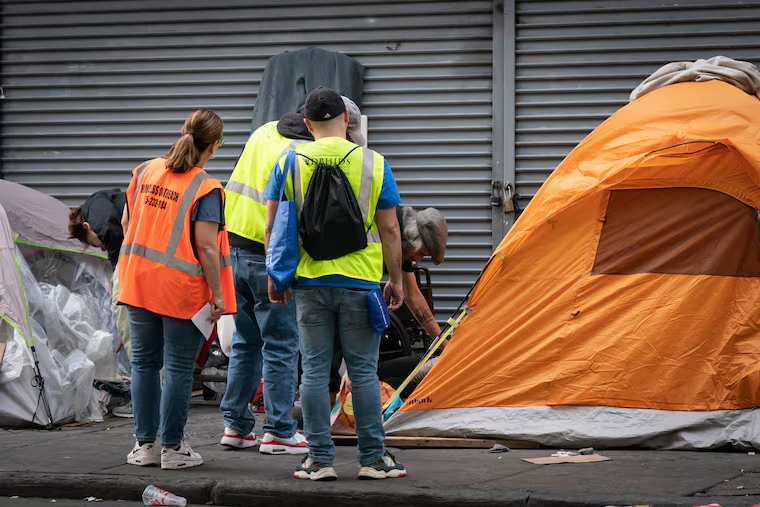Does Philly have enough addiction treatment beds? City Council seeks clarity in Kensington.
There's no easy answer to Council's line of questions.

City Council came to Kensington looking for answers about Philadelphia’s drug treatment system, and one question loomed large: Does the city have enough treatment beds for people in addiction?
The answer was both yes and no.
A special hearing to discuss barriers within the addiction treatment system on Thursday drew more than 100 people to Rock Ministries, a faith-based youth boxing program under the El on Kensington Avenue. Lawmakers spent much of the daylong panel session asking behavioral health officials and addiction specialists to help them break down the confusion around bed availability, wait times, and barriers to recovery.
Mayor Cherelle L. Parker’s administration has repeatedly stressed that drug treatment facilities lack the beds to accommodate Kensington’s fluctuating homeless population — which officials said ballooned to 800 people in May. Councilmember Quetcy Lozada, who led the hearing, said outreach workers in Kensington often report “there are no beds.”
But that is a misunderstanding, Marquita Williams, interim director of the Department of Behavioral Health and Intellectual disAbility Services (DBHIDS), told Council: “There is no waitlist for treatment beds.”
DBHIDS oversees 1,874 Medicaid-eligible treatment beds. On any given day, Williams said, between 100 and 200 beds become available as people cycle in and out of the system. The availability is posted online, she told Council.
But Williams acknowledged there is a waitlist for beds in recovery houses. She also said “Level 4″ treatment beds for people with complex medical needs are in shorter supply.
Level 4 beds are those capable of providing intensive medical care for patients. And with the increasingly toxic nature of Philadelphia’s street drug supply — with the wounds and health complications caused by the animal tranquilizer xylazine, also called tranq — those beds are in increasingly high demand. Officials acknowledged more could be done to expand those slots.
Lozada, whose district covers parts of Kensington, said she did not view the challenge as insurmountable. “I can’t understand why we are making it so difficult,” Lozada said.
“A bed is a bed as far as I’m concerned, I don’t care what the rating on that is,” Councilmember Jimmy Harrity said. “We’ll worry about where we transfer them once we get them in.”
The challenges outlined Thursday were hardly revelatory — nor were the recommended fixes. A report from Thomas Jefferson University, released in March, laid out the treatment system’s persistent challenges in detail.
The issue is not the number of beds, but that securing one of the spots can be time-consuming, difficult and physically painful for people in addiction as withdrawal symptoms occur, according to the report. The window of time between when a person is ready to seek help with their addiction and getting them into a bed takes too long, largely due to lengthy assessment processes and intake processes.
Jefferson recommended increasing the number of inpatient treatment beds for people on public insurance and expanding outpatient care into more neighborhoods. The report also suggested addressing the challenges presented by withdrawal symptoms. Housing, too, remains a pressing barrier for people in addiction — both before and after treatment.
Physicians at the hearing also stressed the need for increased access to medications for opioid use disorder like methadone and buprenorphine.
Williams, of DBHIDS, told Council the department has taken steps to improve its system. Those measures included removing medical authorization requirements for patients, building a new bed registry to streamline referrals, and retaining a consultant to analyze the issue of wait time.
The Parker administration is preparing to build a $100 million drug treatment center in Northeast Philadelphia that add over 600 beds to the system, but construction will take three years. In the meantime, the administration has sought to add beds at existing facilities.
Getting people off the streets of Kensington is not just a capacity issue. Addiction doctors and behavioral health experts stressed throughout the day that people need to be ready to accept treatment.
As the hearing carried into the late afternoon, a drug dealer began giving out free samples of new product around the corner on Somerset Street. Word spread fast, and dozens outside rushed from blocks around.
Staff writer Aubrey Whelan contributed to this article.